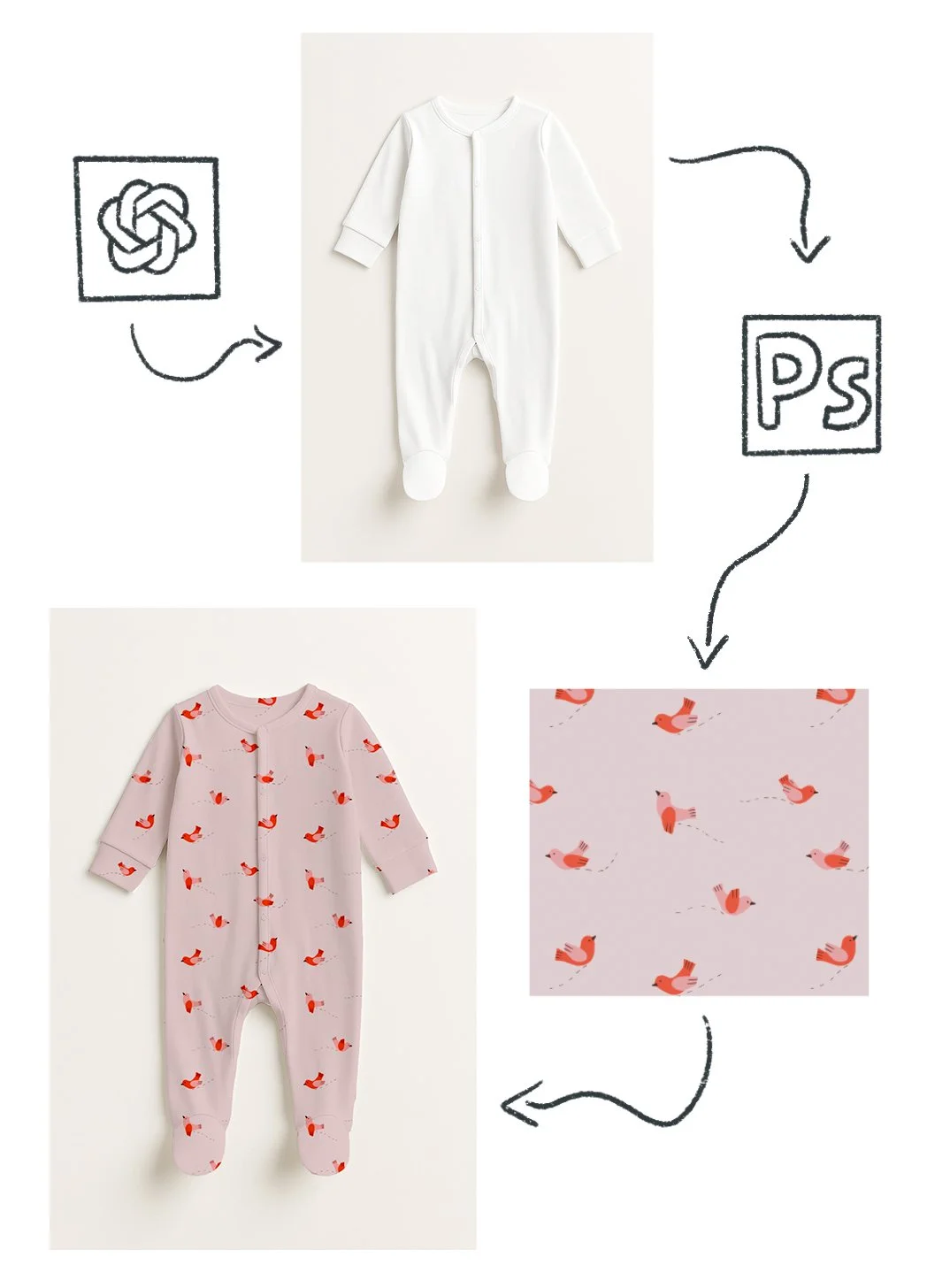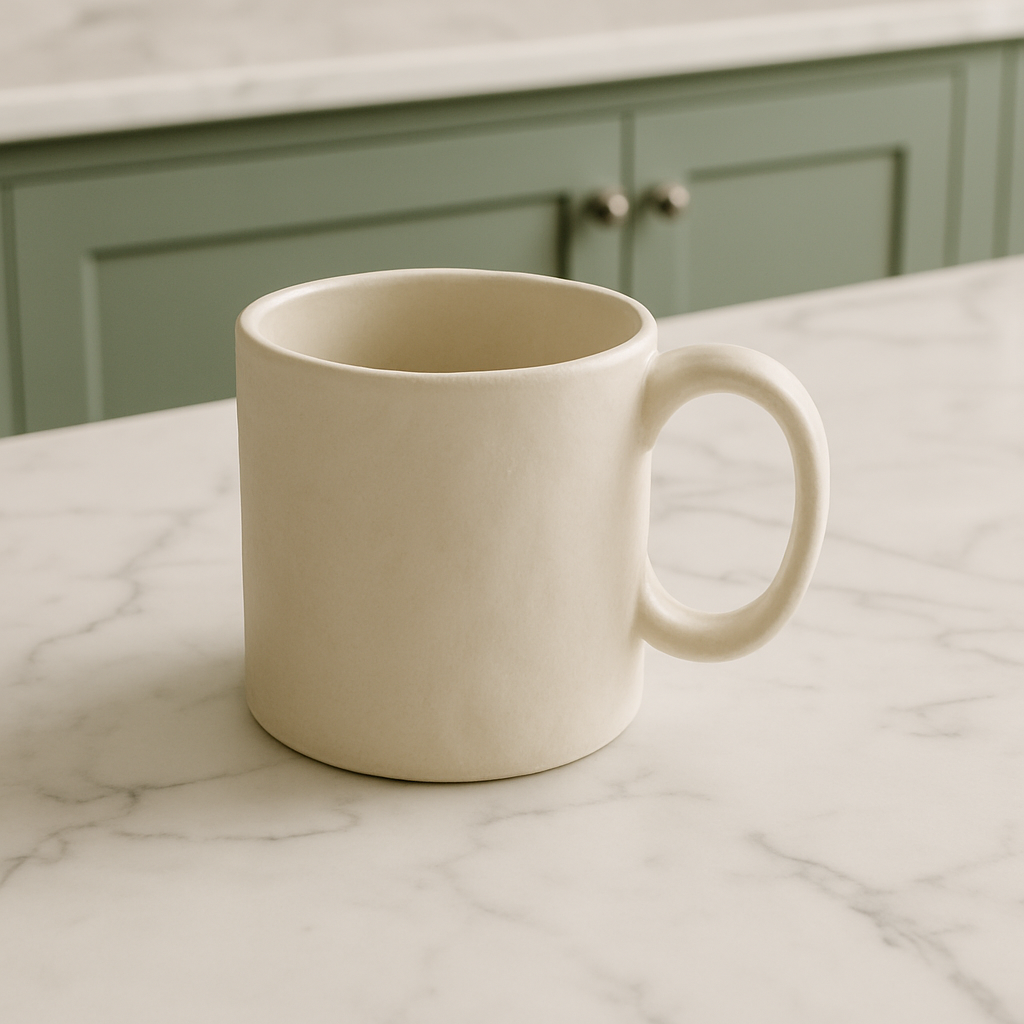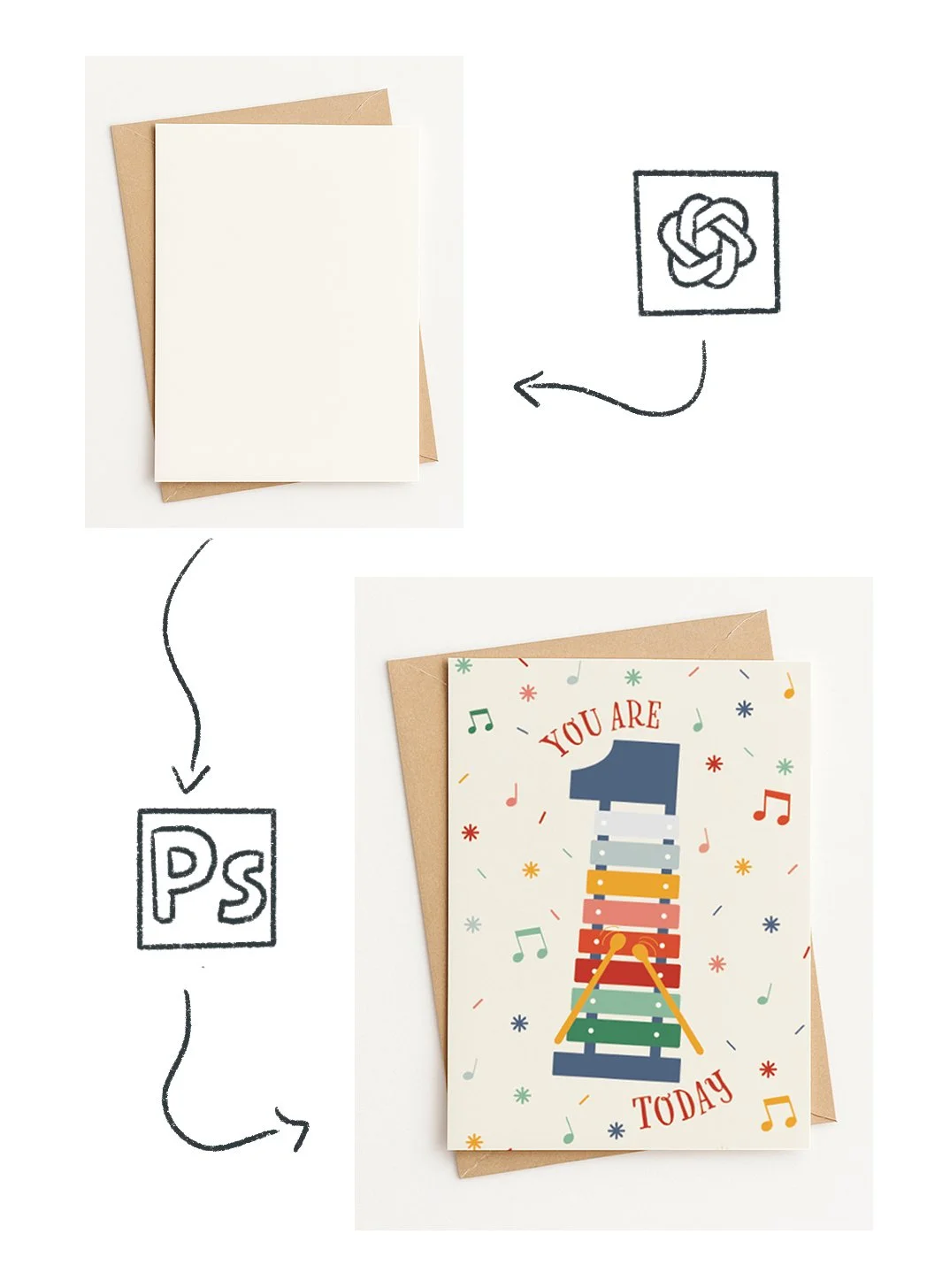I Had 24 Hours to Update My Portfolio. ChatGPT Generated the Mock-ups
If you work in surface design or illustration, you live in mock-ups.
You need them constantly—for portfolios, pitches, social posts, client presentations. You need to show your work on real products, not just as flat files. And most of the time, you need them fast.
Back in July I had a 24-hour deadline to update my portfolio for an agency pitch.
I needed plain product shots—a mug, a baby sleepsuit, some greeting cards. Nothing fancy. Just clean, neutral backgrounds so I could apply my patterns in Photoshop and show the work living on actual products.
Normally, I’d pull mock-ups from Creative Market, Etsy and Creatsy, a particular favourite source. They’re great—high quality, professional, worth the money. But I didn’t have time to browse, compare, download, and hope the angle was right. I needed specific products. And I needed them in an hour, not an afternoon.
So I tried something I hadn’t before. I asked ChatGPT to generate blank product images for me.
Started simple. “Can you generate a mock-up of a mug so I can add my artwork?” Done. Plain white mug, clean background, usable in minutes. I did the same for a baby sleepsuit, greeting cards, and a notebook. Downloaded them, opened them in Photoshop, traced the shapes, applied my patterns with a multiply blend, adjusted the slightly-off AI colour cast, and had mock-ups finished in under an hour.
But then I tested something else.
I took a photo of my favourite mug—this slightly wobbly, uneven, handmade-looking thing (but likely mass produced by Anthropologie, tho I digress)—and uploaded it to ChatGPT with this prompt:
“This is my favourite mug. It’s a bit uneven and wobbly and looks like it’s handmade pottery. Can you generate a simple clean white background photo of this mug, without any pattern or colour, so I can use it to apply my own repeat pattern to it in Photoshop?”
And it worked. ChatGPT gave me a clean, blank version of my mug—keeping the wonky, handmade feel I loved—ready for me to design on.
ChatGPT generated a blank version of my favourite Anthropologie mug. I applied my daffodil pattern in Photoshop using a multiply blend and adjusted the colour cast. Total time: under 20 minutes.
That’s when I realised: this isn’t just about generating generic product shots. It’s about getting exactly the product you want to see your work in, at the angle you need, without spending an hour hunting for it.
Here’s what works:
Simple product shots—mug on a plain background, sleepsuit laid flat, cards on a neutral surface—work brilliantly. The AI handles them well. They look clean, usable, and professional enough.
Simple product prompt (”generate a plain baby sleepsuit”) + my bird pattern applied in Photoshop. The AI-generated blank gave me exactly the angle I needed without hunting through stock sites.
Here’s what doesn’t:
The more context you add, the faker it looks. I tested a few images of the mug sitting on a kitchen counter or a table. They came out... fine. But noticeably AI generated. And if your mock-up looks generated, people might assume your artwork is too. Not worth the risk.
More context = more obviously AI. The kitchen setting gives it away. This is why I stick to plain backgrounds.
So I stick to the simple stuff. Plain backgrounds. Clean shots. Products that don’t need a lifestyle setting to work.
This works for placement art too, not just repeat patterns. ChatGPT generated a blank card, I applied my kids birthday xylophone illustration in Photoshop. Same process, different product.
A few practical notes:
Don’t ask ChatGPT to mock up your artwork for you. You’ll lose control over placement, scale, and quality. The sweet spot is generating the blank product, then applying your own design work in Photoshop. You keep full control. The AI just gives you the canvas faster.
AI-generated images can’t be copyrighted, but your artwork still can. I spent an hour going down a ChatGPT rabbit hole about this—turns out copyright law around AI is messy and still being figured out, but the short version is: protect what’s actually yours.
One small technical note: I find that images generated in ChatGPT tend to have a slight cream or yellowish hue. Easy fix—adjust the colour in Photoshop before applying your pattern.
Want the full Photoshop tutorial? I’ll be breaking down the exact process— generating the image in ChatGPT, tracing shapes, applying patterns, adjusting colours, and troubleshooting common issues. Sign up here and I’ll email you when it’s ready.
It’s not a replacement for paid mock-ups. It’s a tool for when you’re in a bind, or when you need something weirdly specific, or when you just want to test an idea quickly without committing to a purchase.
(Mock-ups shown here were generated via ChatGPT. Images include: AI-generated blank products [mug, sleepsuit, cards] and examples of my own patterns applied to these blanks in Photoshop. The wobbly mug shape was generated from a photo of my actual Anthropologie mug—ChatGPT created a clean blank version that I then applied my own pattern to.)
This post originally appeared in my Substack newsletter. Subscribe for weekly updates.




